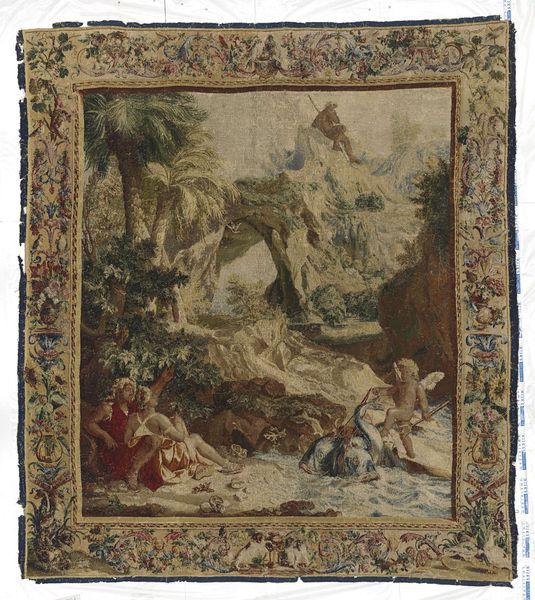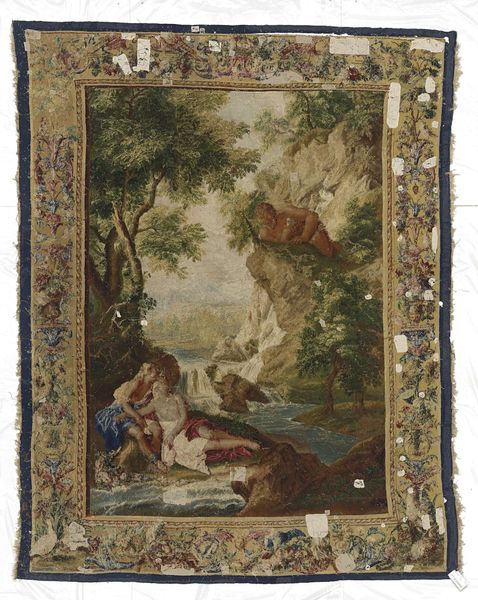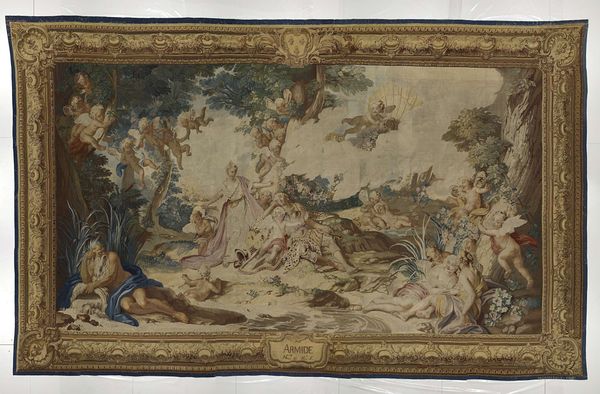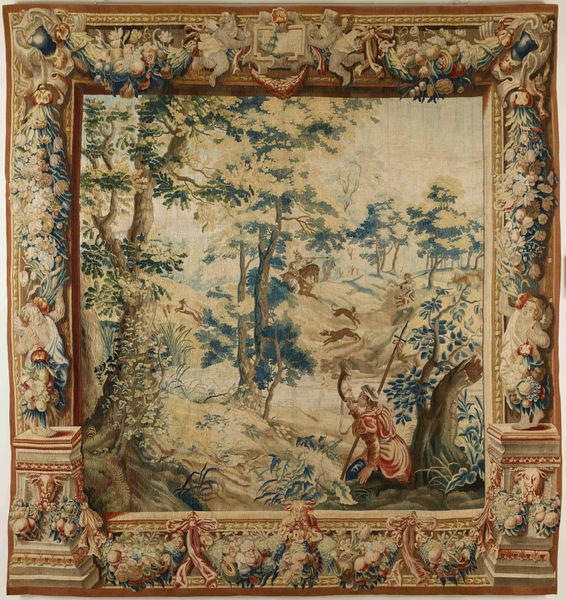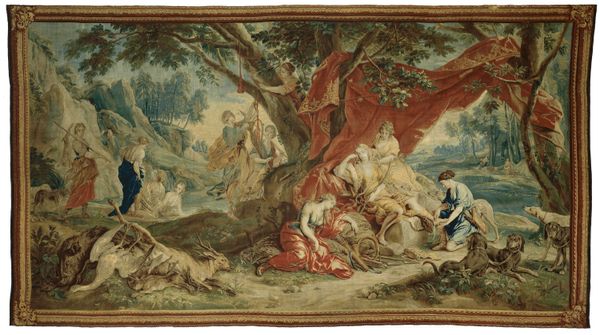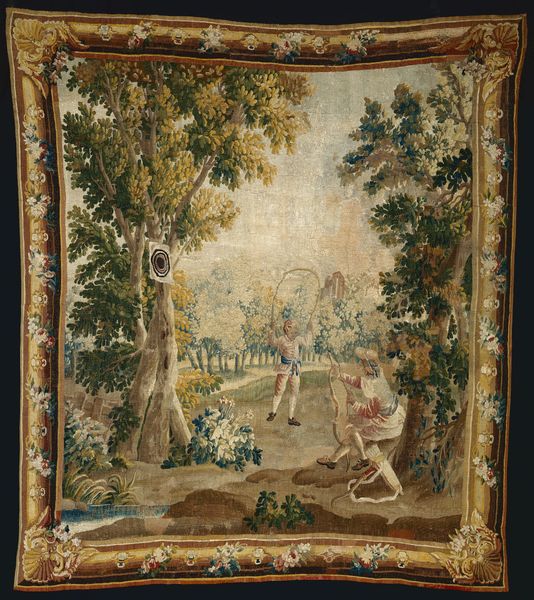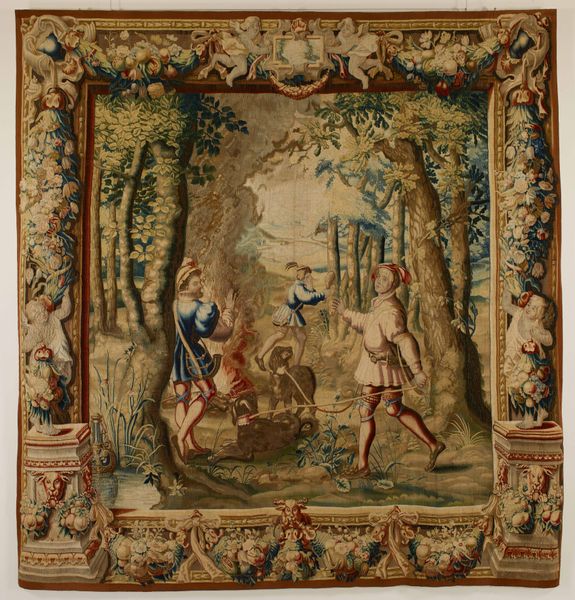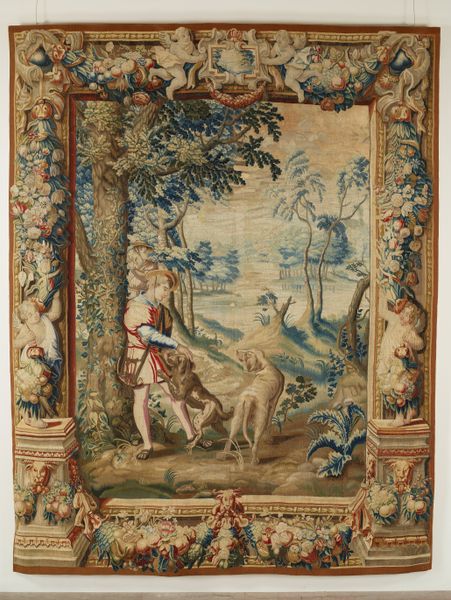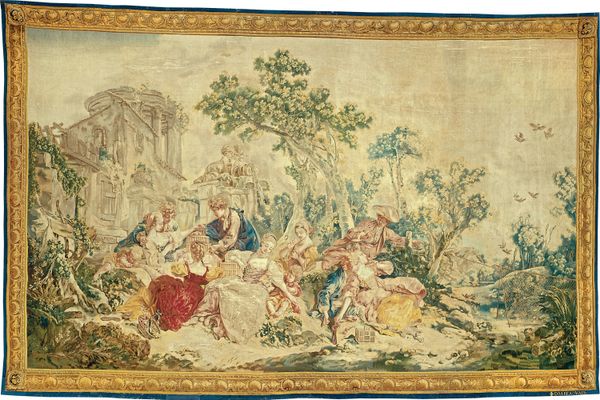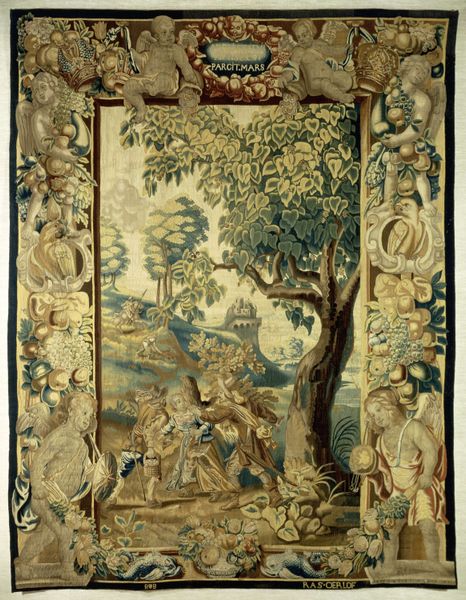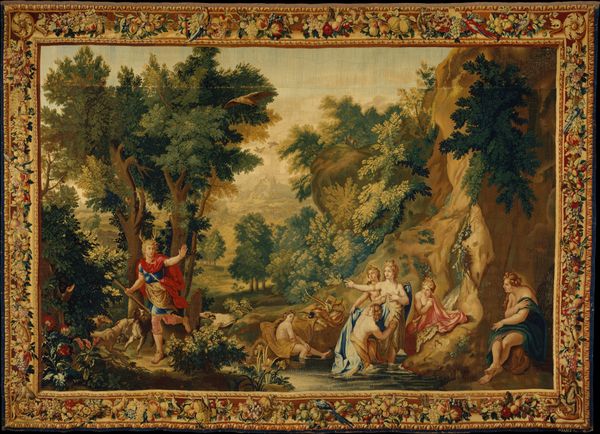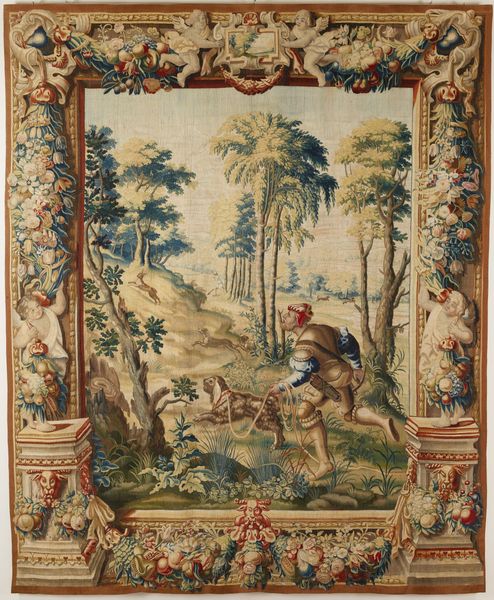
#
baroque
#
landscape
#
figuration
#
oil painting
#
history-painting
Dimensions: height 314 cm, height 316 cm, width 242.5 cm, width 239 cm
Copyright: Rijks Museum: Open Domain
Curator: What strikes me immediately is the air of languid ease despite the grand, theatrical Baroque style. Editor: I see it too. We're looking at a tapestry, “Bacchus and Ariadne,” crafted circa 1680-1684 by the Manufacture Royale des Gobelins. It's a visual feast of classical mythology, yet something about the arrangement suggests a turning away from pure spectacle. Curator: Absolutely. Tapestries in this era were so often instruments of power, proclaiming wealth and status, but the interaction feels far more intimate and personal. Editor: Yes, the positioning of the figures seems almost like a stage tableau, a paused moment from a play. Considering the patriarchal underpinnings of many classical myths, especially when visually reproduced, how does that "pause," that potential intimacy, challenge traditional narratives about women? Curator: I think that’s very insightful. Note Ariadne's stillness as Bacchus adorns her with a crown; this scene symbolizes a resolution and integration. Consider Ariadne abandoned by Theseus: the labyrinth itself can be viewed as the unconscious and Ariadne’s thread as her intuitive guiding principle. Bacchus’ arrival signifies wholeness through union. Editor: That makes me think of the complicated reality of unions between goddesses or mythical women and gods. They were often rife with imbalance and abuse of power. The imagery almost papers over potentially exploitative encounters. It is vital to unpack and see past that. Curator: The landscape, although quite idealized, doesn’t reinforce power structures as some of the art from that era does. The gentle hills evoke feelings of a nurturing place, rather than a site of masculine dominance. Editor: In this interpretation, even Bacchus and Ariadne take on new layers, suggesting healing and renewal but also highlighting social commentary of the 17th century in the mythological setting. Curator: Indeed, this artwork reminds us how cultural memories, continuously re-told, shape not just individual stories but the collective narratives within society. Editor: Ultimately, artworks like these serve as critical documents through which to assess historical frameworks of power and think critically about their evolution.
Comments
rijksmuseum about 2 years ago
⋮
Ariadne, the daughter of King Minos of Crete, complained to Bacchus, the god of wine, that she had been abandoned on the island of Naxos by her lover Theseus. Bacchus is here holding Ariadne’s diadem. He will cast it up into the sky, where it will turn into a constellation.
Join the conversation
Join millions of artists and users on Artera today and experience the ultimate creative platform.
